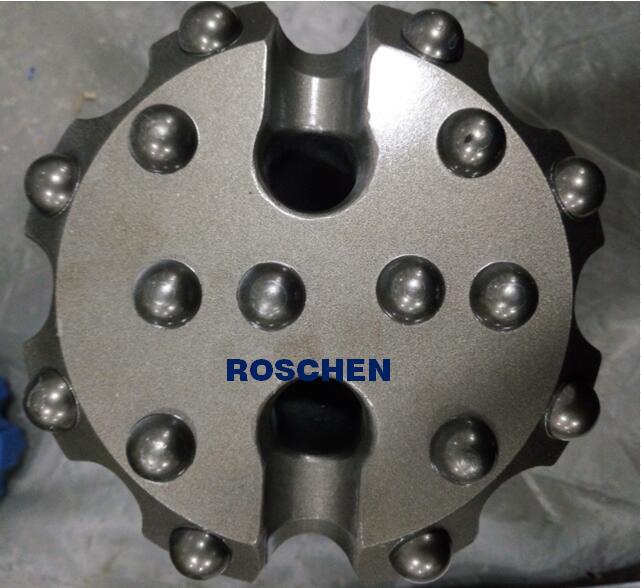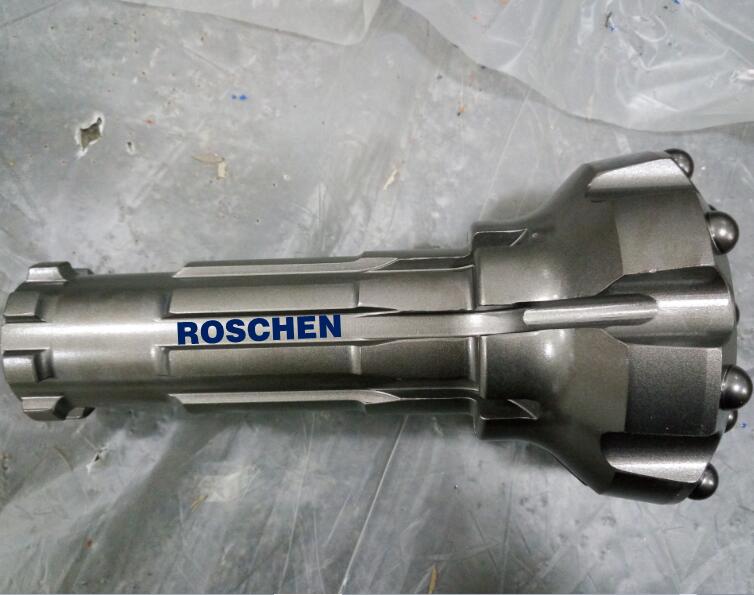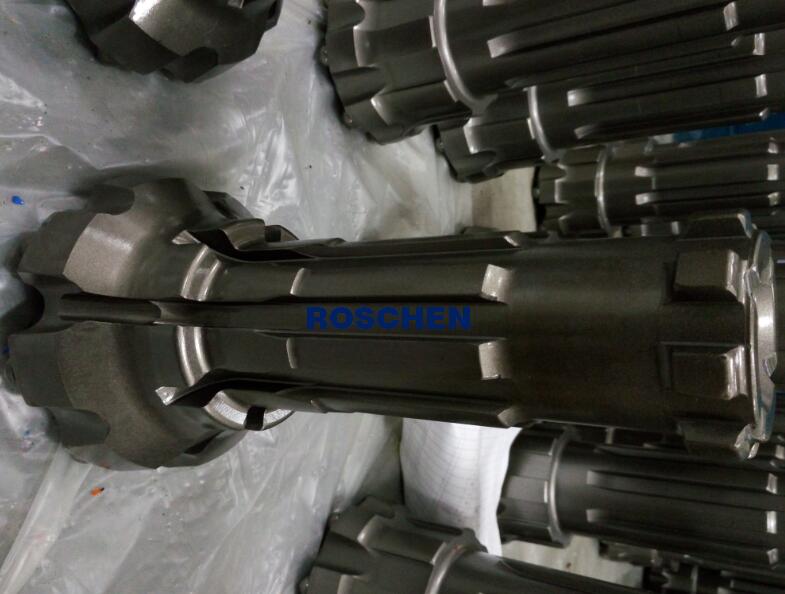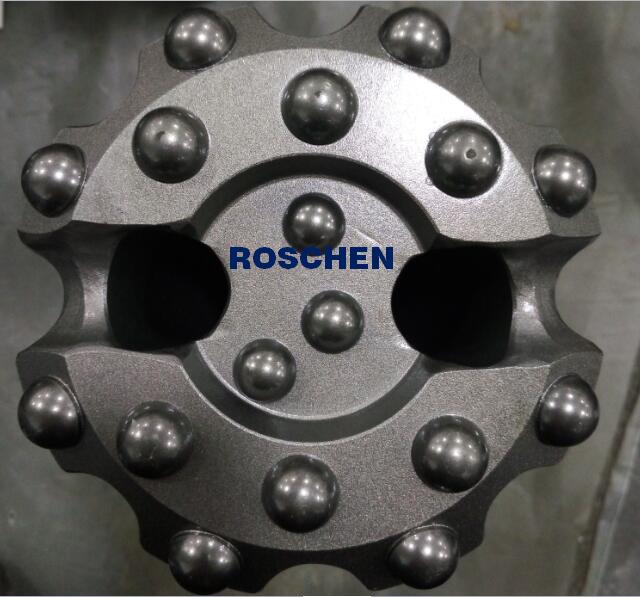RE542 RC hammer button bits
RC hammer button bits RE542
Product description:
RE542 | ||||||||
Diameter | No x Button diameter mm | Button angle | Flusing holes | Shroud Dia (mm) | Weight (kgs) | Part No | ||
mm | inch | Gauge Buttons | Front Buttons | |||||
121 | 4 3/4 | 8x14 | 6x14 | 35 | 2 | 119 | 10.6 | RE542-121 |
124 | 4 7/8 | 8x14 | 8x13 | 35 | 2 | 122 | 10.8 | RE542-124 |
127 | 5 | 8x14 | 8x14 | 35 | 2 | 125 | 11 | RE542-127 |
130 | 5 1/8 | 8x14 | 10x14 | 35 | 2 | 128 | 11.3 | RE542-130 |
ROSCHEN carry a large inventory of RC bits for convenient and quick delivery. Standard bits come with higher grade carbides for longer, harder drilling performance. Reverse Circulation drilling is one of the most frequently used methods of drilling used across the world as it is more cost effective and efficient than other methods of drilling. When compared to Rotary Air Blast and diamond drilling, RC drilling seems to be somewhere in the middle when it comes to cost, time, quality of samples, technique and depth.
ROSCHEN RC bits sizes.
1. RC bits 86mm -102mm for 3" RC hammer RE531
2. RC bits 114mm -127mm for 4" RC hammer RE004
3. RC bits 121mm -133mm for 4.5" RC hammer RE542/RE543
4. RC bits 124mm - 138mm for 5" RC hammer RE545/PR40
5. RC bits 133mm - 146mm para 5.5" RC hammer PR52/RE547/PR54/MX5456
ROSCHEN adjust button number, button configuration, button diameter to get ultra-performance and reduce the drilling cost for you according to your rock formation situation.
Applications:
RC drilling is a technique used in the majority of stages of mine development. As it is cheaper than diamond core drilling, it is often used in first stage exploration mining to delineate a potentially extractable ore body. It is also preferable to RAB or air-core drilling when trying to reach great depths, but RC drilling is slower and more expensive than either of these two methods.
RC drilling is also consistently used during in-pit grade control and the development stage of an ore body.
Basics of Reverse Circulation Drilling:
1. RC drilling uses rods with inner and outer tubes, the drill cuttings are returned to surface inside the rods. The drilling mechanism is a pneumatic reciprocating piston known as a hammer driving a tungsten-steel drill bit.
2. RC drilling utilizes much larger rigs and machinery and depths of up to 500 meters are routinely achieved. RC drilling ideally produces dry rock chips, as large air compressors dry the rock out ahead of the advancing drill bit.
3. RC drilling is slower and costlier but achieves better penetration than RAB or air core drilling; it is cheaper than diamond coring and is thus preferred for most mineral exploration work.










